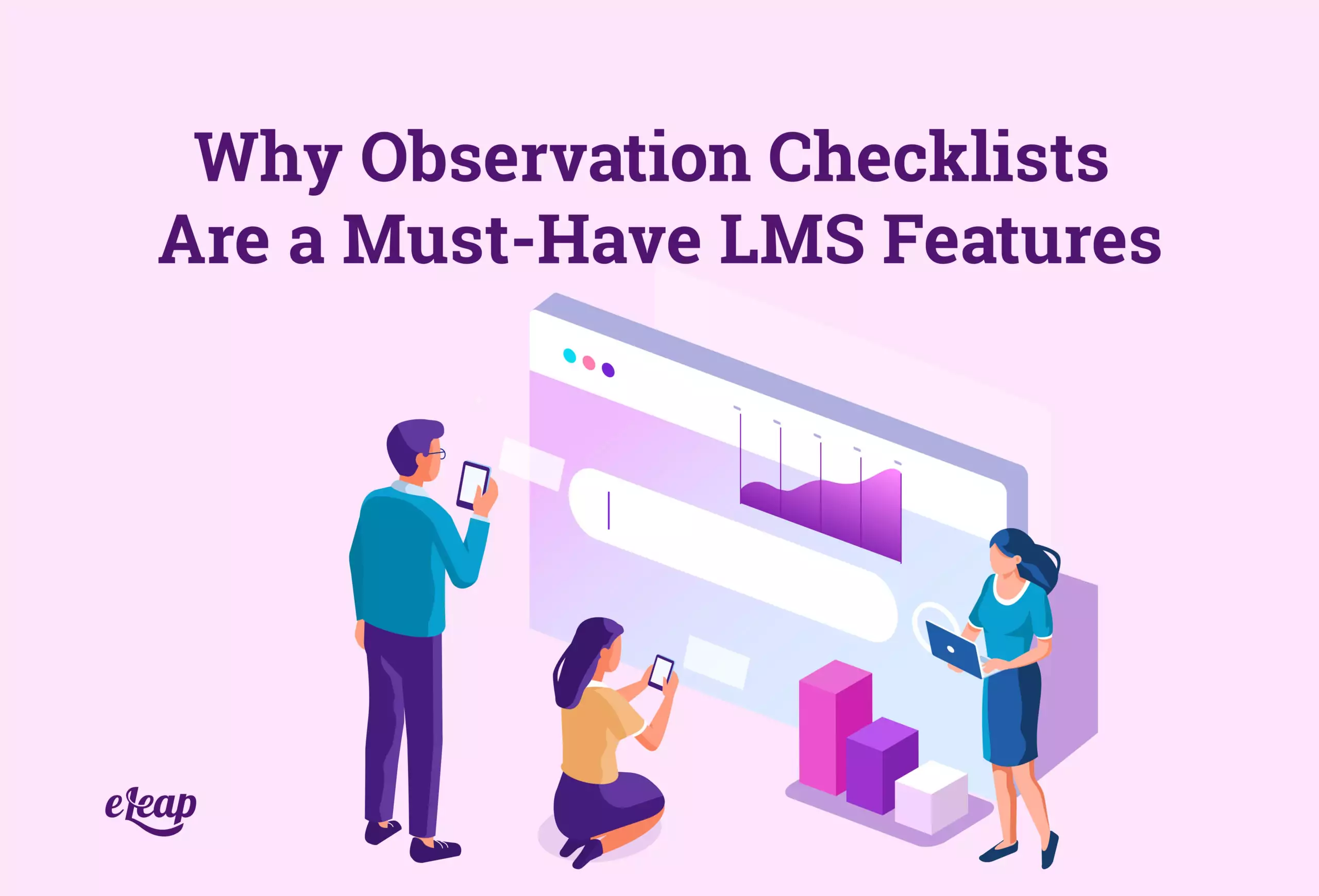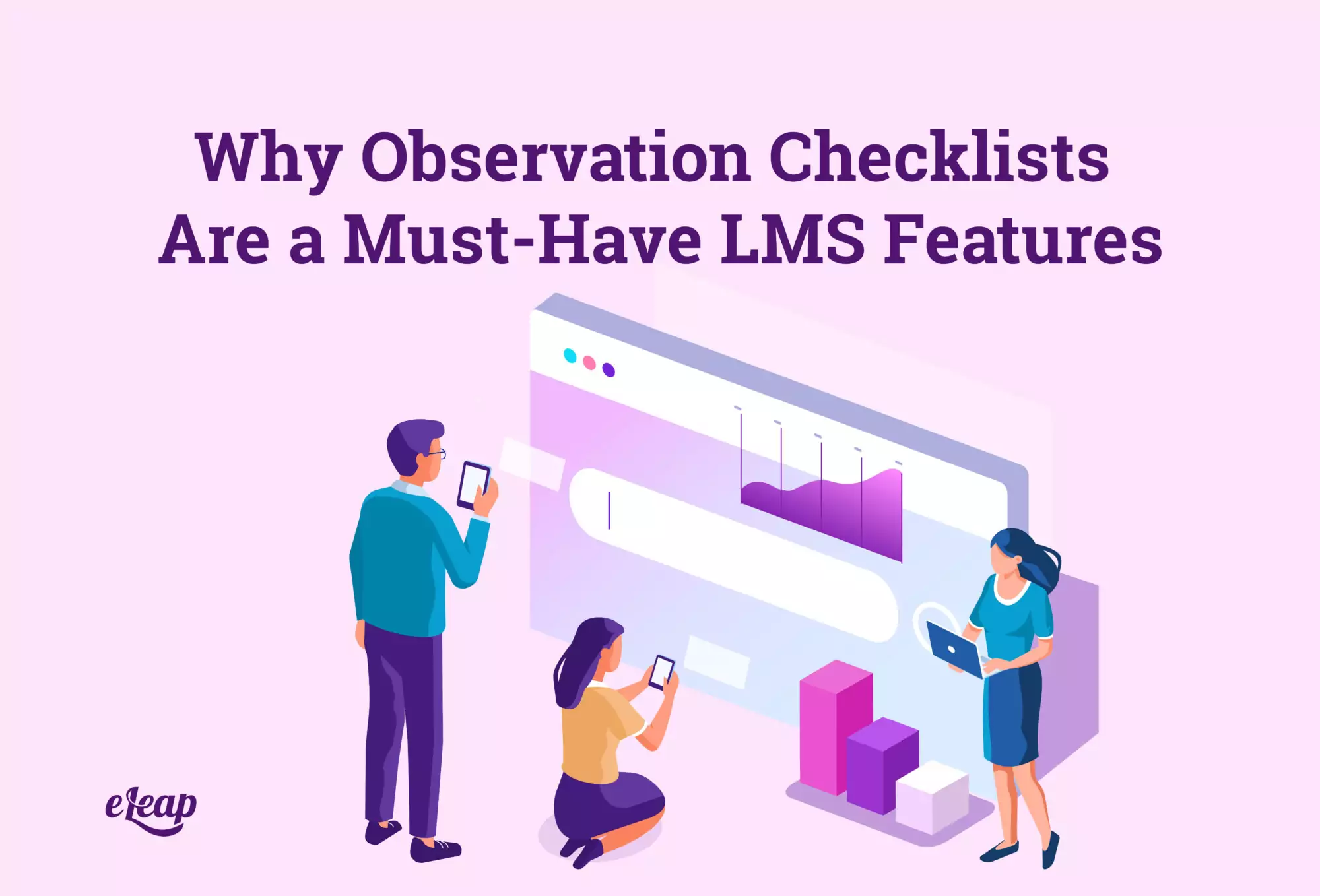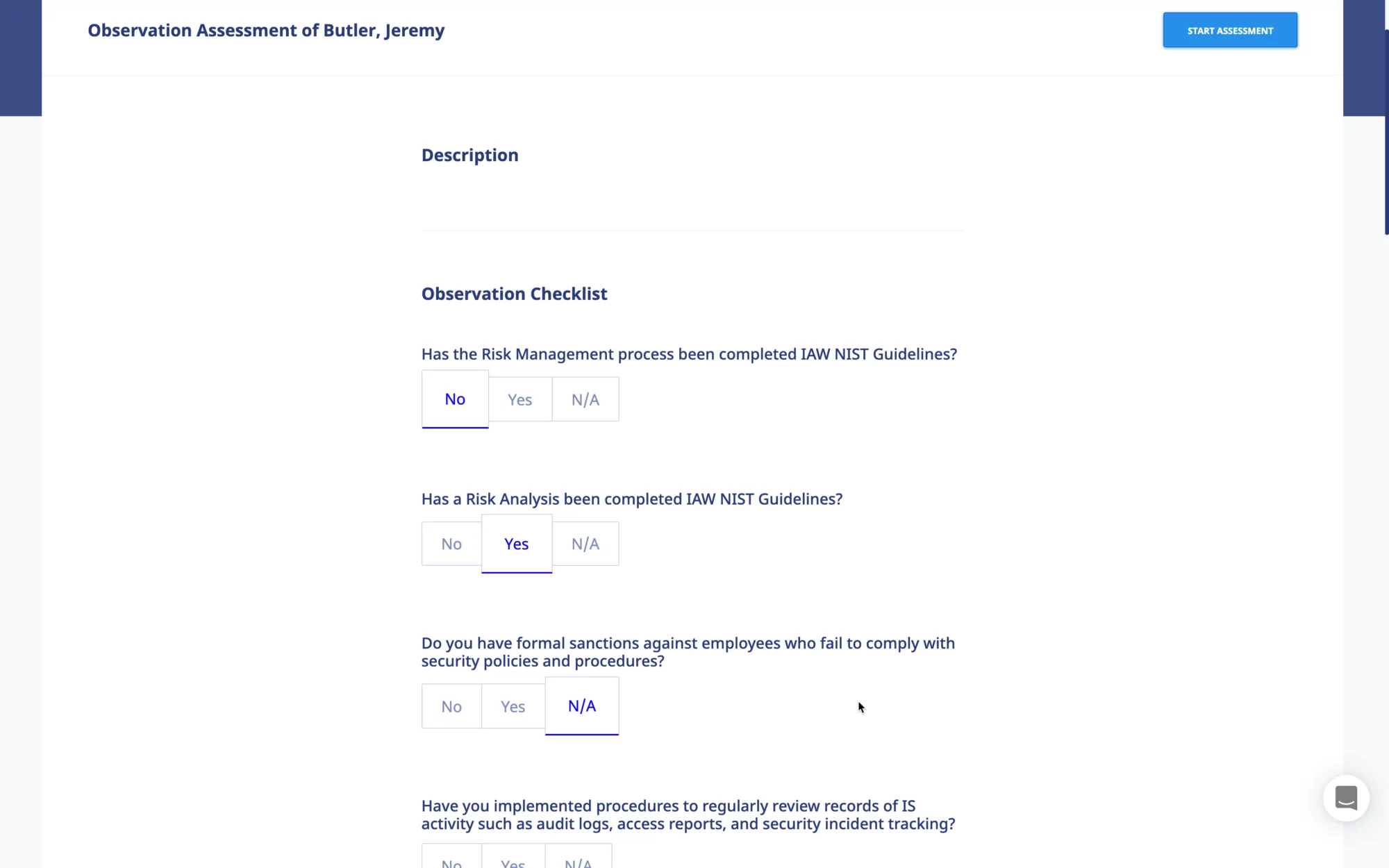Why Observation Checklists Are a Must-Have LMS Features

Providing high-quality, well-designed, thoughtful training content is useless if your learners aren’t actually absorbing information. If you want to be able to evaluate how well your learners are taking to training you have implemented through your LMS, you need to be able to adequately track it, in addition to enabling a better understanding of training, observations checklists allow you to gauge the level of training achievement based on knowledge accretion, productivity, trainee skill sets, and other related factors. After all, data-driven assessments and tools that an LMS provides are some of the most beneficial features of eLearning.
These days, remote learning tools and learning management systems have made tracking training effectively much easier and more efficient. With remote work on the rise since the outbreak of the Coronavirus pandemic, many organizations are experiencing a reduction in the ease with which they can touch base with employees, making observation checklists an even more essential component of learning management systems, as they easily fulfill this function online.

What is an Observation Checklist?
An observation checklist provides a convenient way of monitoring trainee performance. They help to ensure that training is as efficient as possible by providing a clear-cut learning pathway and a way to observe trainees. Observation checklists are an effective source of on-demand, real-time information, helping teachers and leaders better manage their learners and their courses. They also help to improve regulatory compliance and make sure that learners are sticking to course materials and progressing adequately.
Observation checklists are beneficial in numerous ways. They help with a number of different aspects of learning, including:
- Eliminating the need for traditional, paper-based assessments and timely check-ins
- Closing the training loop to ensure compliance
- Helping to showcase the competency of employees and determine which learners may need extra help.
- Helps to assess skill sets and determine training needs.
- Recording and keeping track of progress, performance, and learning data.
It’s the responsibility of leaders and trainers to make sure they can adequately assist their learners, and to do so, they need to be able to observe and document training tasks. Observation checklists are an essential component that allows this to happen with ease. Essentially, they can help to capture what will happen as a result of training.
For example, upon completion of formal training and any mandatory learning provided through your organization’s learning management system, new employees can be evaluated to ensure they are performing in line with the training that they were given. Observational testing of the new hires is done by leaders or trainers and scored online against the checklists, which list key expectations. Essentially, observation checklists provide a list of measurable tasks that can be evaluated by the trainer. This helps an organization not only assess competency but also provide feedback to bridge any observed training gaps. Ultimately, this helps to prevent discrepancies between what was taught in training, what the learner has actually absorbed, and what is actually being applied to the job.
In addition, observation checklists are critical for far more than just training new hires. They can also help to ensure that learners comprehend and are sticking to critical training such as regulatory and data compliance. It’s essential that organizations can determine this, as the failure of learners to actually apply training in these areas to the job can have detrimental consequences. Compliance training can also become quite tedious for some employees, causing them to not absorb information adequately. Without an observation checklist, it may be difficult to determine how much learners have actually understood and how ready they are to apply information to their job in real time.
Observation checklists can assist in ensuring sufficient learning, and management of that learning, across multiple different areas. Why? Because courses and checklists can be easily allocated to individuals or groups, edited, modified, replicated, or designed to address a specific need.
How Observation Checklists Integrate with Your LMS
Here’s the key takeaway: Observation checklists make training assessment easier. Organizations can use it to track the effects of training on on-the-job tasks and ensure that employees follow established policies and procedures. They help to evaluate whether users need new refresher courses or need to upgrade their skills by checking their progress inside and outside of the learning platform. By doing so, formal training does not become a one-time event. Assessments can be conducted at any time, enabling and supporting continuous learning.
However, in order for observation checklists to work as efficiently as possible, the checklist must become an integral part of the LMS. Integration is essential for utmost effectiveness. It’s impossible to fully utilize the advantages of an observation checklist when they are hosted in external systems or aren’t sufficiently integrated to work in conjunction with your LMS. By integrating the observation checklists with your learning management system, learning and training data can be easily and quickly accessed by managers and trainers alike. The better your analytics and data, the better equipped you will be to assist your learners with their training journey. Essentially, checklists that are native to your learning management system ensure a more effective and efficient method for competency mapping.
At the end of the day, training is only effective if learners absorb it and are able to apply it in real-time and in real scenarios. If there is a gap between what training is teaching and what the learner is actually picking up, that gap needs to be identifiable in order for any issues to be resolved. Observation checklists are an answer to this problem. They ensure that leaders and trainers are able to adequately track, document, and, if necessary, assist with the performance of employees during training. If you haven’t utilized observation checklists that are integrated into your learning management system, you aren’t making the most of your eLearning platform.
